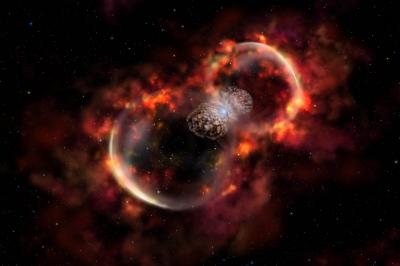[/caption]
Stars can range in temperature, from the relatively cool red dwarfs to superhot blue stars. So what is the hottest star in the Universe?
First, let’s talk a bit about temperature. The color of a star is a function of its temperature. If a star looks red, that means its surface temperature is approximately 2,500 Kelvin. Just for comparison, our Sun, which actually looks white from space, measures about 6,000 Kelvin. The hotter the star, the further up the spectrum you go. The hottest stars are the blue stars. A star appears blue once its surface temperature gets above 10,000 Kelvin, or so, a star will appear blue to our eyes.
So the hottest stars in the Universe are going to be a blue star, and we know they’re going to be massive. So the question is, how massive can stars get? One example is the star Rigel, in the constellation Orion. Rigel is thought to have 17 times the mass of the Sun, and puts out 40,000 times the luminosity of the Sun. It’s surface temperature is a mere 11,000 Kelvin. Another star in Orion, Bellatrix, has a temperature of 21,500 Kelvin. That’s even hotter.
But the hottest known stars in the Universe are the blue hypergiant stars. These are stars with more than 100 times the mass of the Sun. One of the best known examples is Eta Carinae, located about 7,500 light-years from the Sun. Eta Carinae could be as large as 180 times the radius of the Sun, and its surface temperature is 36,000-40,000 Kelvin.
Just for comparison, 40,000 Kelvin is about 72,000 degrees F.
So it’s the blue hypergiants, like Eta Carinae, which are probably the hottest stars in the Universe.
We have written many articles about stars on Universe Today. Here’s an article about how Eta Carinae is almost ready to explode as a supernova. And here’s a link to a nice photo of the nebula around Eta Carinae.
Want more information on stars? Here’s Hubblesite’s News Releases about Stars, and more information from NASA’s imagine the Universe.
We have recorded several episodes of Astronomy Cast about stars. Here are two that you might find helpful: Episode 12: Where Do Baby Stars Come From, and Episode 13: Where Do Stars Go When they Die?
References:
NASA: Eta Carinae
University of Illinois

